Laverda 750 SFC
With Ian Falloon
Today we are used to sanitary motorcycles, machines that are easy to operate and packed with user-friendly features. Life was not always like this, and in Northern Italy during the 1960s and 1970s, Laverda specialised in producing single purpose motorcycles.
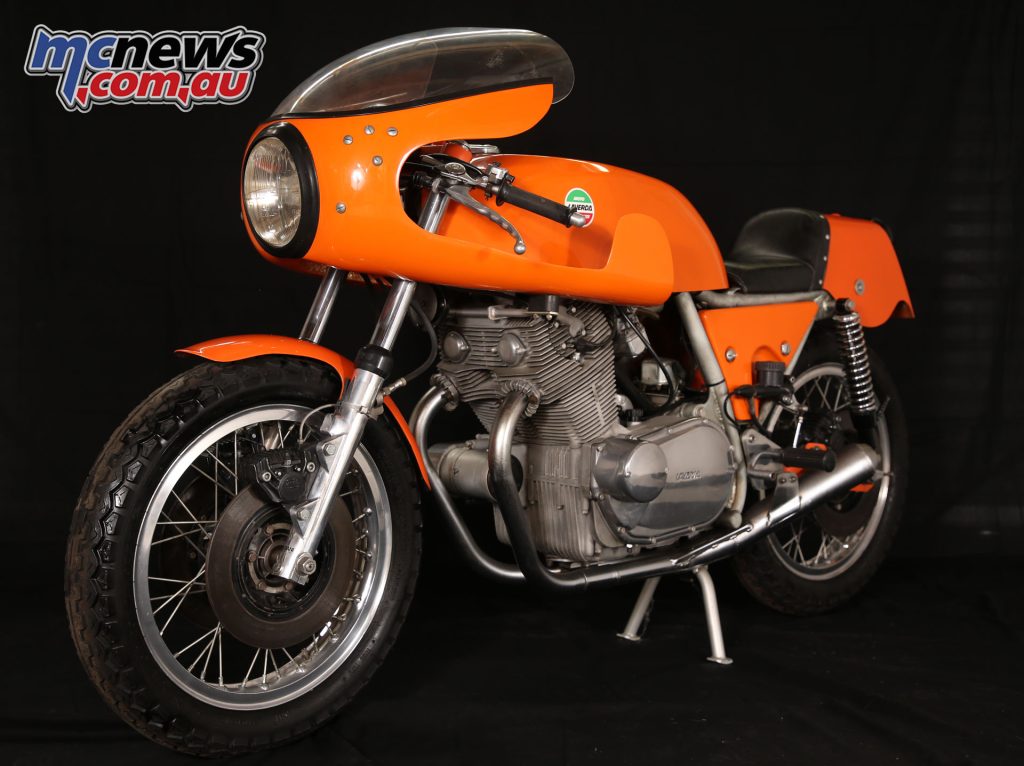
Outlandish and brutal, designed for the alpine roads on their back doorstep, the Laverda 750 SFC was the ultimate early 1970s factory racer. There were others, like the Ducati 750 Super Sport, MV Agusta 750S, and Moto Guzzi V7 Sport, but the 750 SFC was different. This was a masculine motorcycle, muscular, and bursting with testosterone.
Always conceived as an endurance racer, the 750 SFC (Super Freni Competizione, or super brakes competition) was built to last. It was the success of the SFC in endurance racing from 1971 until 1973 that did much to create the Laverda reputation for robustness and exceptional all-round performance.
The bright orange colour scheme of the factory racers would become an SFC (and ultimately a Laverda) trademark. Each SFC was hand-made in batches by the competition shop and while a few were produced from 1971, most were built in 1974 (as seen here) and into 1975. Based on the production 750 SF, the engine specification was unremarkable, and certainly not as exotic as the Desmodromic Ducati or double overhead camshaft MV.
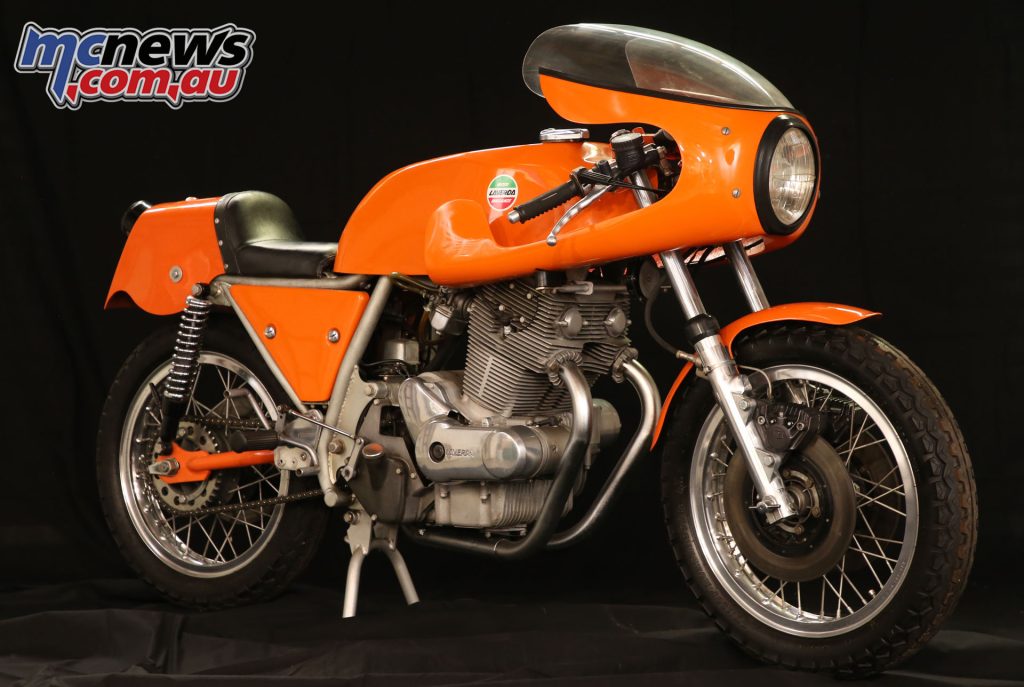
When Laverda embarked on the design of a large capacity twin back in 1966, company chief Massimo Laverda had his designer Luciano Zen analyse and copy a Honda 305 cc “Super Hawk” parallel twin because it had a proven record of reliability. Although it differed in a number of design details, the 360-degree parallel twin engine layout was similar to most British twins for example, unlike the British twins the pressed-up crankshaft included central roller bearings.
Primary drive was by triplex chain, and the single overhead camshaft duplex chain driven. Other Honda-inspired features included the cast-iron skull combustion chamber. On the 750 SFC the 80 x 74 mm engine included a lighter crankshaft, polished con-rods, and higher compression pistons, and with a pair of 36 mm Dell’Orto concentric carburettors the 750 SFC produced a claimed 75 horsepower at 7500 rpm.
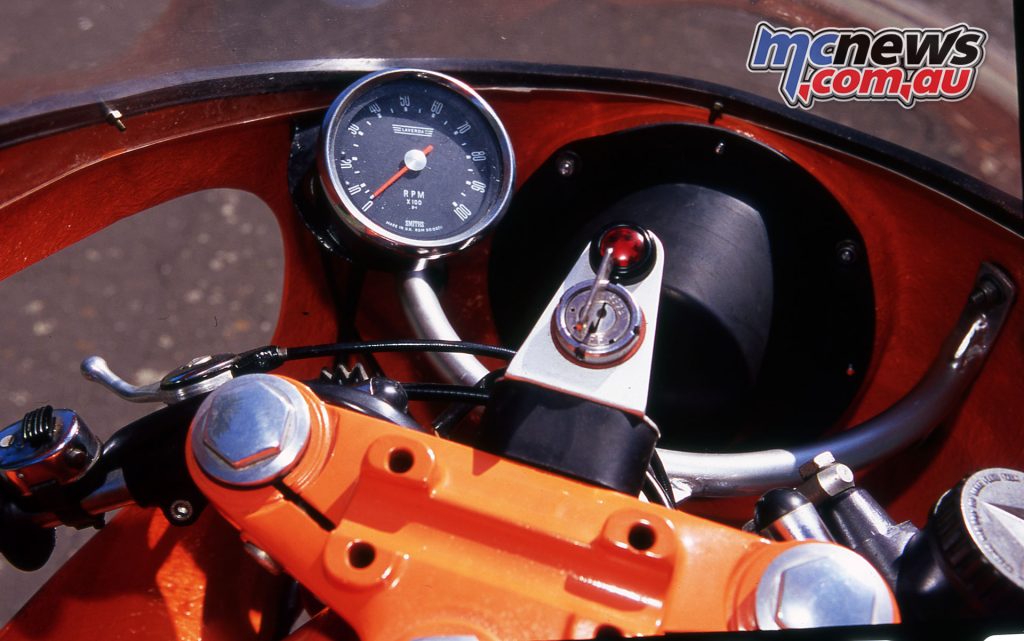
Just about every component was produced specifically for the 750 SFC. While the zinc-plated open cradle frame was similar in design to the 750 SF, it was quite different, particularly for the 1974 and 1975 versions. These examples also included a larger diameter (38mm) Ceriani front fork, and triple Brembo disc brakes.
Although weighing a considerable 230 kg, the wheelbase was a moderate 1460 mm and the tall SFC was a competent handler. Everything about it screamed racing, particularly with the optional two-into-one megaphone exhaust. The rider stretched out over the long 25-litre fibreglass fuel tank to crouch under the lowest fairing screen of any production motorcycle. Although one concession was made to civility, an electric start, the 750 SFC was not designed for tooling around town.
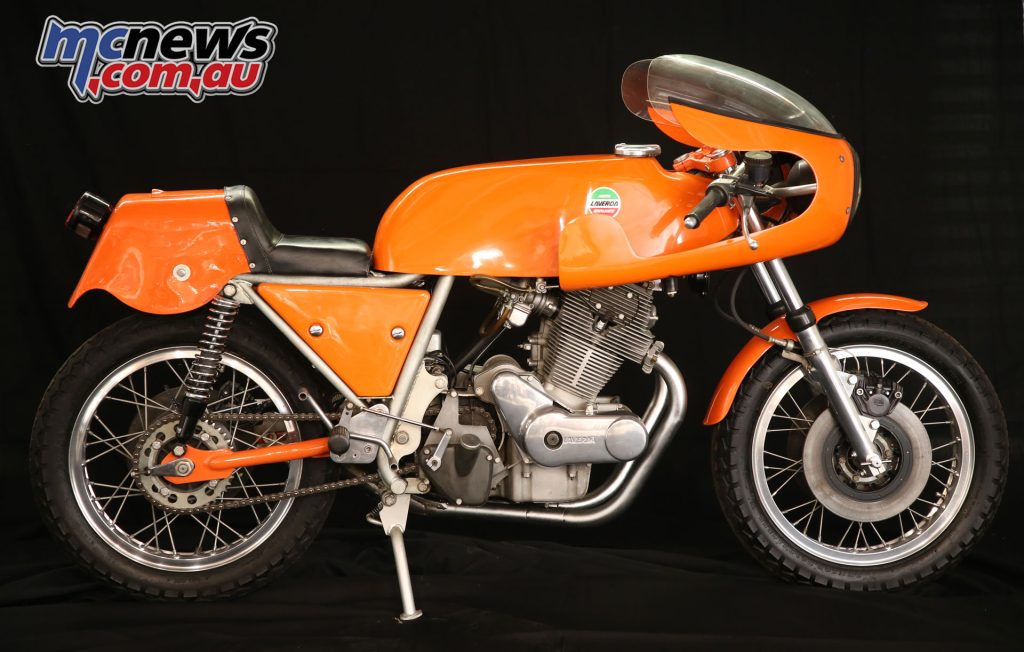
Like many Italian manufacturers in the 1970s Laverda was obsessed with the US market and during 1974 the U.S. importer Continental Motors commissioned a North American version as shown here. While the engine and chassis specifications were the same as the European model the U.S. specification 750 SFC included 1000 3C Nippon Denso instruments, turn signal indicators, a larger rectangular taillight, and adjustable handlebars.
The 750 SFC was a raw open road motorcycle par excellence. While the big twin vibrated, and the controls were heavy, one ride could convince the rider they were flat out at the Bol d’Or. Stability was unquestioned and the top speed was close to 210 km/h. But eventually time caught up with the 750 SFC.
Larger capacity Japanese multis were now winning endurance racers, and Laverda’s own double overhead camshaft 1000 provided more performance. The hand-built 750 SFC was expensive to produce, and becoming difficult to sell.
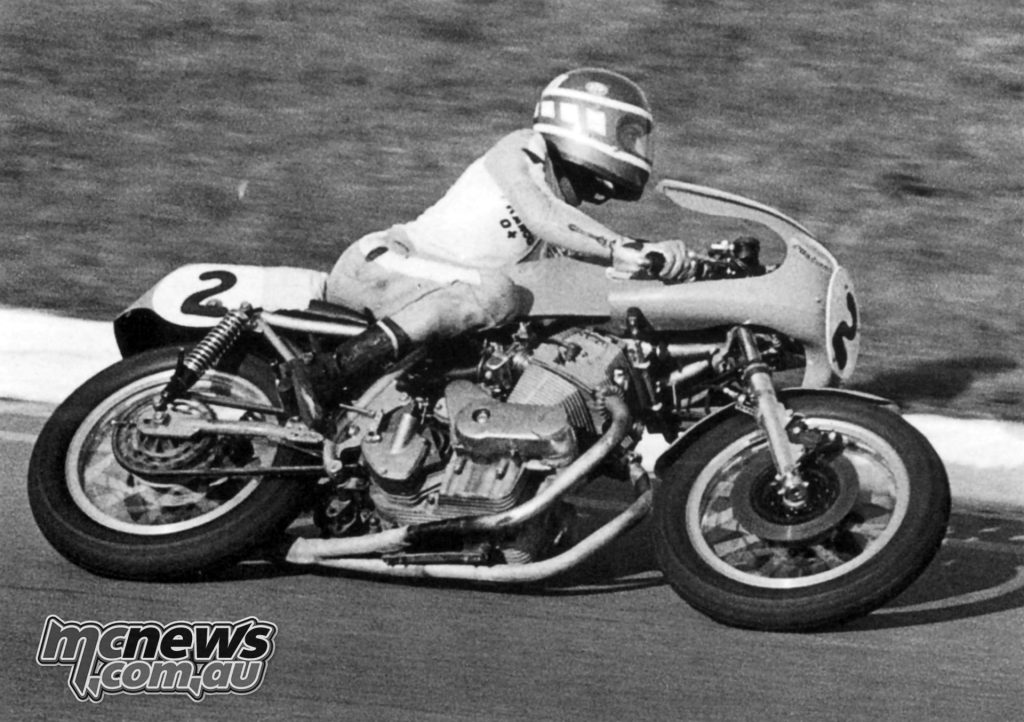
The 750 twin died, and while the 1000 triple also became an SFC in 1985, Laverda folded soon afterwards. After several botched resurrection attempts Laverda now seems destined to remain in history but the distinctive, beautiful, and functional the 750 SFC will never be forgotten.
Five Facts about the Laverda 750 SFC
- Laverda was founded by Francesco Laverda in 1947 in the northern Italian town of Breganze. Prior to building motorcycles they were an agricultural machinery company.
- After building a reputation with small capacity motorcycles, Francesco’s son Massimo Laverda took over the company during the 1960s and decided to produce large capacity bikes.
- The Laverda twin started life as a 650 twin in 1968, and was deliberately styled to look like the Honda CB77. This was so it would be popular in America where it was sold as the American Eagle.
- By 1970, the Laverda twin grew to 750 cc with the SF 750, and was successfully campaigned in a number of endurance races in Europe. This led to the first SFC in 1971, and victory in the Barcelona 24 hour race. The orange colour was chosen so the SFC could be distinguished amongst the other, mostly red, bikes.
- Only 549 750 SFCs were produced between 1971 and 1976, with 100 made in 1974 specifically for the US market. They had to be built prior to September 1974 to avoid the DOT’s new left-side gearshift requirement. As it was so expensive the US 750 SFCs were still available new as late as 1977.























